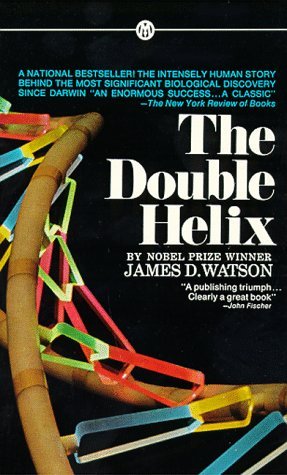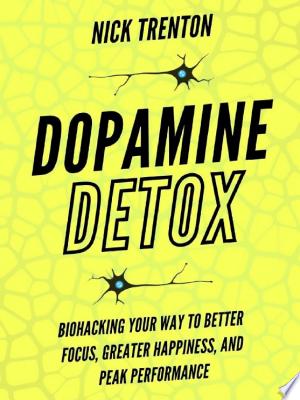Estimated read time: 5 min read
One Sentence Summary
"The Double Helix" is a personal account of the discovery of the structure of DNA by James D. Watson.
Table of Contents
Introduction
"The Double Helix" is a groundbreaking non-fiction book written by James D. Watson, a key figure in the discovery of the structure of DNA. The book provides a personal account of the race to uncover the DNA structure, revealing the challenges, competition, and breakthroughs that led to one of the most significant scientific discoveries of the 20th century.
Brief Synopsis
Plot Overview
The story is set in the 1950s, primarily at the Cavendish Laboratory in Cambridge, England, and focuses on the intense rivalry between research teams striving to unravel the mystery of DNA. James Watson, along with Francis Crick and Maurice Wilkins, becomes deeply involved in the pursuit of understanding the composition of DNA, the molecule that carries genetic information.
Setting
The Cavendish Laboratory, with its competitive and intellectually stimulating environment, serves as the primary setting for the unfolding events in the book. The scientific community at the time is depicted as highly ambitious and driven by the desire to make groundbreaking discoveries.
Main Characters
The book revolves around several main characters who played pivotal roles in the exploration of DNA's structure.
| Character | Description |
|---|---|
| James Watson | A young, ambitious scientist with a passion for genetics. He is determined to uncover the DNA structure. |
| Francis Crick | A brilliant and unconventional scientist who collaborates with Watson in the quest to decipher DNA. |
| Maurice Wilkins | A researcher at King's College London, who is initially working on DNA and becomes involved in the race. |
| Rosalind Franklin | A talented X-ray crystallographer whose work on DNA's structure provides crucial insights for Watson and Crick. |
Summary of Different Story Points Over Chapters
Chapter 1-3: The Quest Begins
Watson introduces himself and his eagerness to find the structure of DNA. He describes his first encounter with Maurice Wilkins, a key player in DNA research, at King's College in London. Watson becomes increasingly intrigued by DNA's secrets.
Chapter 4-6: Enter Rosalind Franklin
Watson and Crick learn about Rosalind Franklin's X-ray diffraction images, which offer substantial clues about the structure of DNA. They become determined to beat their rivals in discovering the DNA structure.
Chapter 7-9: Rivalry and Revelations
Tensions rise as Watson and Crick encounter obstacles and challenges in their research. Their rivalry with Linus Pauling, a renowned chemist, intensifies, adding pressure to their pursuit of DNA's structure.
Chapter 10-12: The Breakthrough
After numerous setbacks, Watson and Crick make a groundbreaking realization about the double helix structure of DNA. Their collaborative effort finally pays off, leading to a significant scientific breakthrough.
Main Events
- Watson and Crick's initial fascination with DNA and their resolve to uncover its structure.
- The discovery of Rosalind Franklin's crucial X-ray diffraction images.
- Intensifying competition and rivalry with other scientists, particularly Linus Pauling.
- The breakthrough realization of the double helix structure of DNA by Watson and Crick.
Themes and Insights
Pursuit of Scientific Discovery
"The Double Helix" delves into the relentless pursuit of scientific knowledge, highlighting the passion, determination, and sacrifices involved in groundbreaking research. It portrays the competitive nature of scientific exploration and the impact of personal ambition on the quest for discovery.
Ethical Dilemmas in Science
The book also explores ethical dilemmas in scientific research, particularly in the competitive atmosphere of the 1950s scientific community. It raises questions about the boundaries of ethical behavior in the pursuit of scientific achievements.
Collaboration and Rivalry
The dynamics of collaboration and rivalry among scientists are central themes in the narrative. The book illustrates how teamwork and competition can drive scientific progress while also revealing the interpersonal challenges and conflicts that arise in such environments.
Reader's Takeaway
"The Double Helix" offers readers a captivating insider's perspective on one of the most significant scientific breakthroughs in history. It provides insights into the human side of scientific research, shedding light on the intense emotions, challenges, and triumphs experienced by the scientists involved. Readers will gain a deeper understanding of the complexities and ethical considerations inherent in scientific exploration.
Conclusion
In "The Double Helix," James D. Watson skillfully narrates the exhilarating journey of discovery that led to the unravelling of DNA's structure. The book presents a compelling blend of scientific insights, personal reflections, and the intricate dynamics of scientific pursuit. Through vivid storytelling, Watson offers readers a unique and engaging account of the race to unlock the secrets of DNA, making it a must-read for those intrigued by the human drama behind monumental scientific achievements.
The Double Helix FAQ
What is 'The Double Helix' about?
The book 'The Double Helix' is a personal account of the discovery of the structure of DNA by James D. Watson, one of the key figures in the scientific breakthrough.
Is 'The Double Helix' a work of fiction or non-fiction?
'The Double Helix' is a non-fiction book, presenting the real events and experiences of the author during the time of the DNA discovery.
Who is the author of 'The Double Helix'?
The author of 'The Double Helix' is James D. Watson, a prominent molecular biologist and geneticist who, along with Francis Crick, made significant contributions to the understanding of DNA structure.
What makes 'The Double Helix' significant?
The book is significant because it provides a behind-the-scenes look at the competitive and sometimes controversial nature of scientific discovery, shedding light on the human side of groundbreaking research.
Is 'The Double Helix' suitable for readers interested in science?
Yes, the book is suitable for readers interested in science, particularly molecular biology, genetics, and the history of scientific discoveries.





